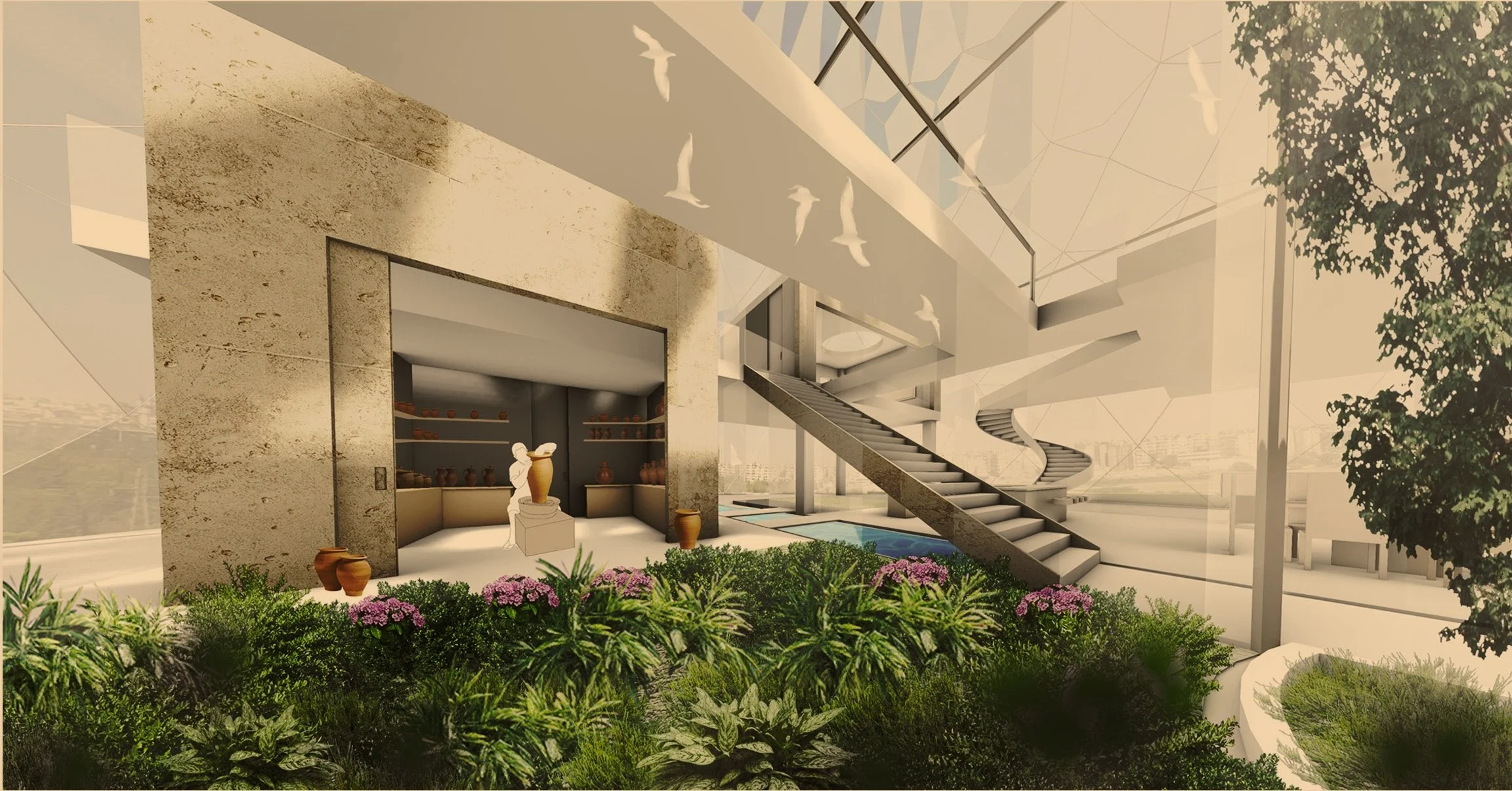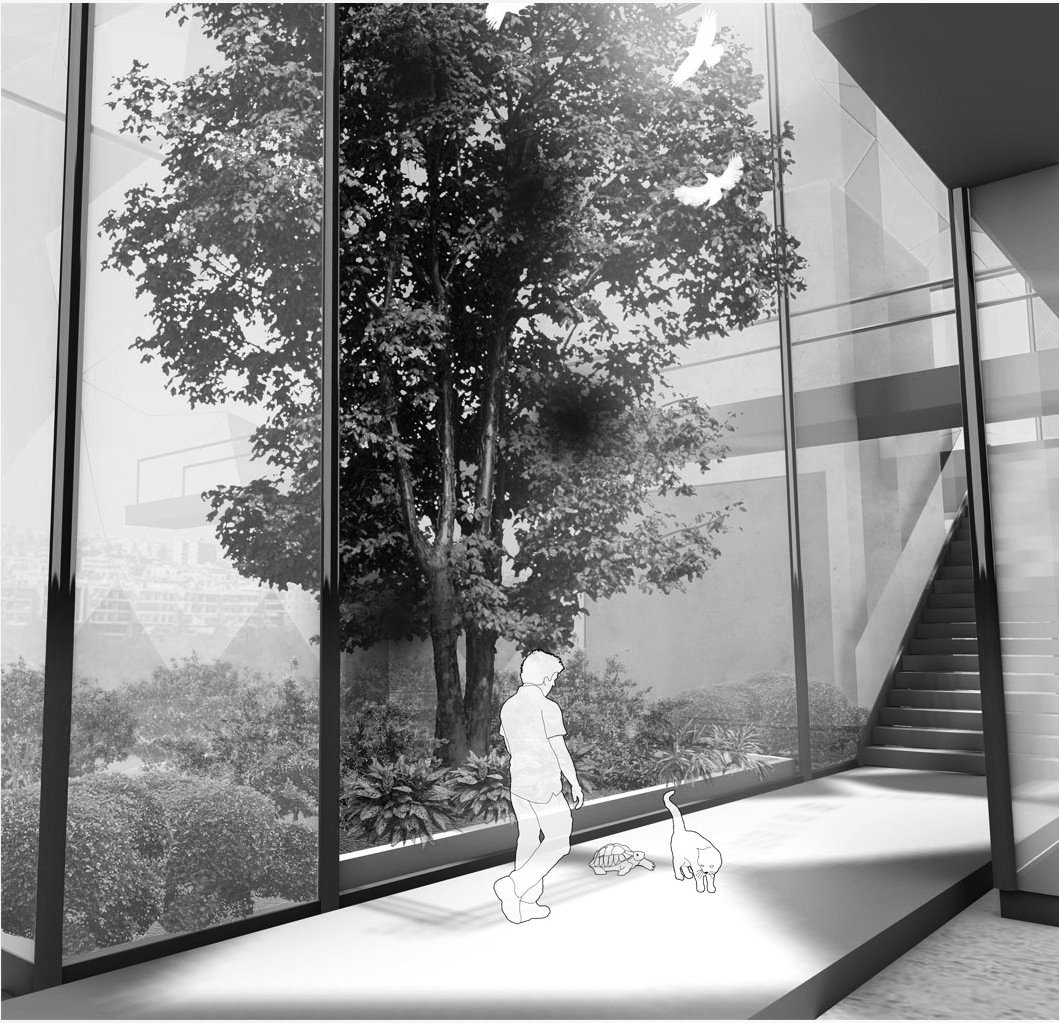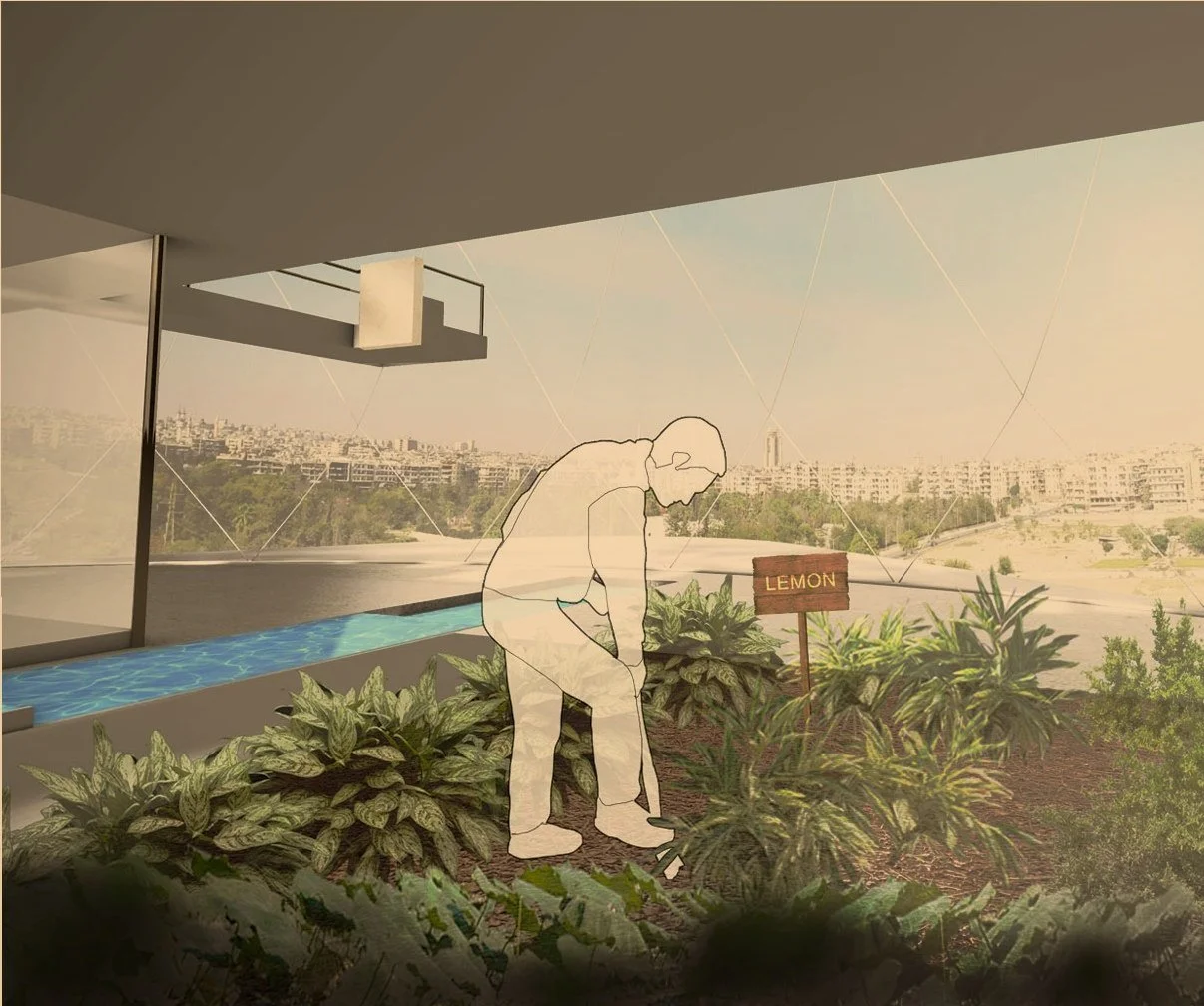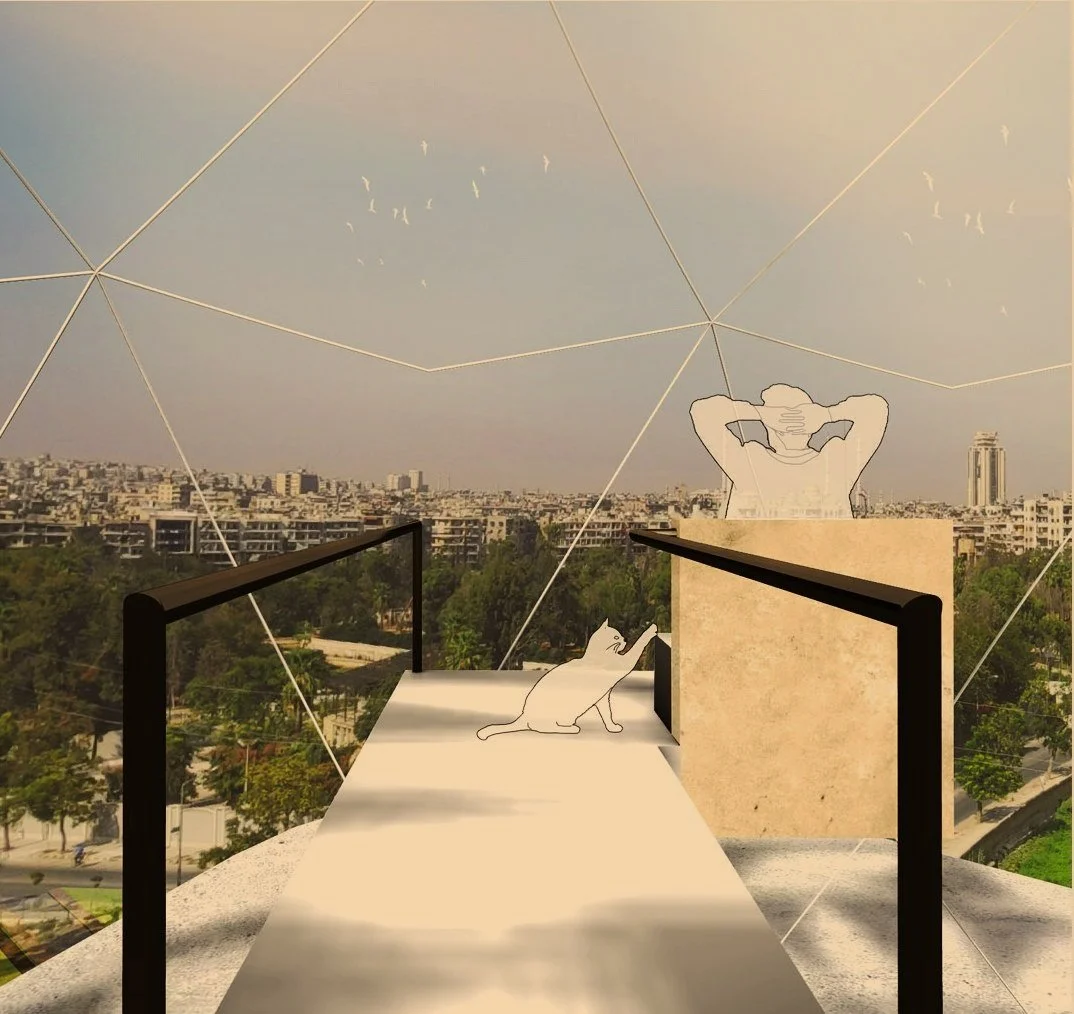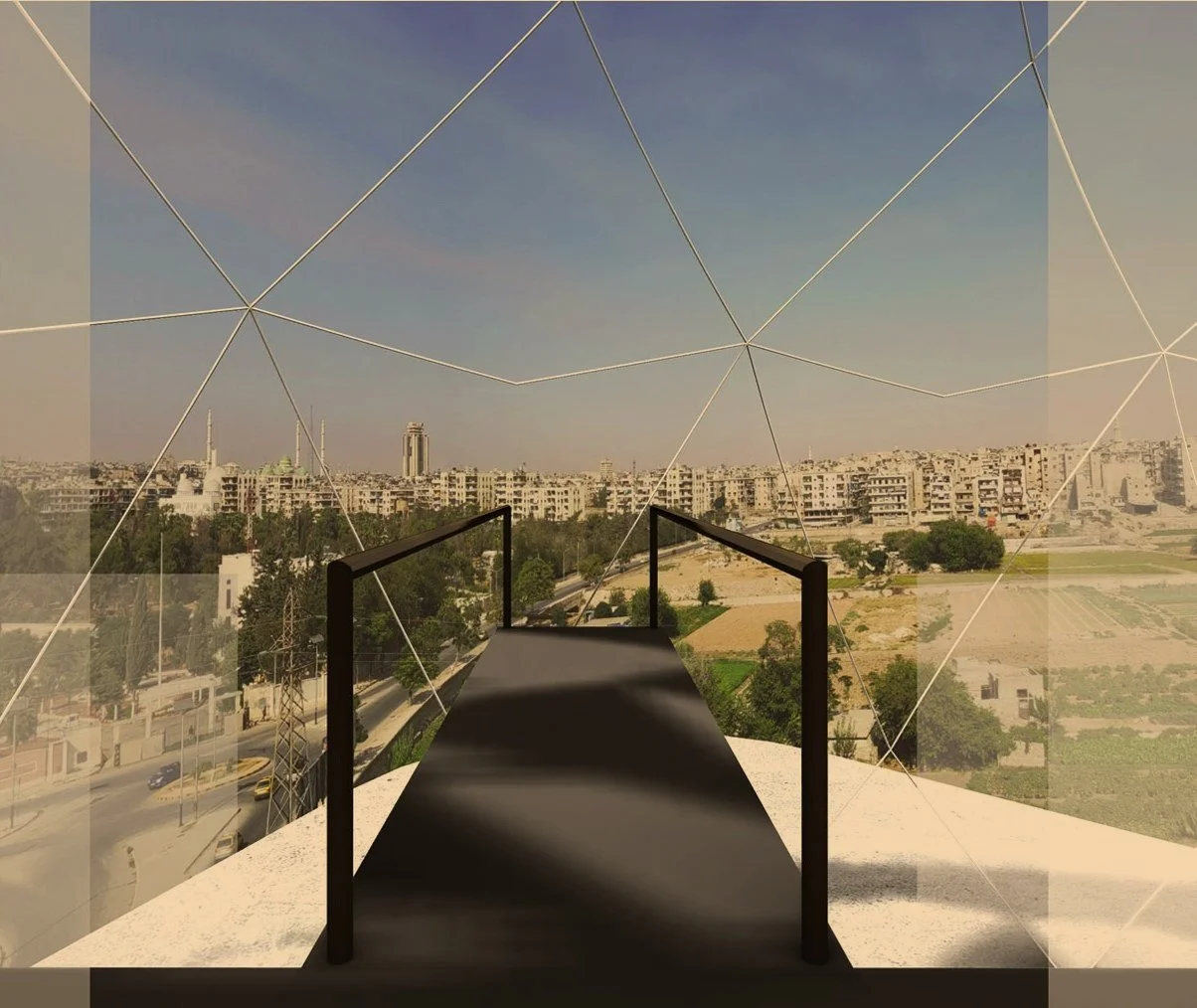House for Recovery
“URBAN E’RZAL
E’rzal (Arabic for treehouse) is a built space on top of a tree. It is a structure that allows exploration. It can also be a shelter, a refuge, a private place to isolate and reflect, to recover and heal. Despite being commonly associated with natural and rural landscapes, our intention was to adapt the concept to an urban context.”
Ayman,
45y,Syrian from Aleppo, is a fictional character that represents thousands of cases of those who were imprisoned within a confined space - an individual prison cell. Ayman suffers symptoms of claustrophobia, stress and social anxiety. He feels rejected by society and it has been difficult for him to re-integrate.
Location,
Our project is located in Aleppo City. It is placed on top of a 5-storey residential block located on a corner between two wide streets in Al-Iza'a neighbourhood south-west to the centre. It has a wide panoramic view to the east, overlooking the riverbank and the skyline of the Old City of Aleppo.
Problematique,
After his release, Ayman found it difficult to adapt and feel comfortable at a typical house, as small and defined spaces triggered his memories of imprisonment. He also became sensitive to brightness and noise and more appreciative to privacy and freedom.

Research
Since the character is fictional, our research focused on the 'pain of the imprisonment' as stated in the reviewed literature on this difficult living experience. This helped us understand the common feelings of suffering among prisoners regardless of geography, gender, or age.
From this comprehensive research, we highlighted three areas of intervention: physical, mental, and social, as demonstrated in the diagram to the right (Prison Experience). Accordingly, we proposed architectural solutions that aim to help Ayman recover and re-integrate in the society, as structured in the diagram below (Urban E'rzal; social recovery, body recovery, mind recovery).












